
Menu

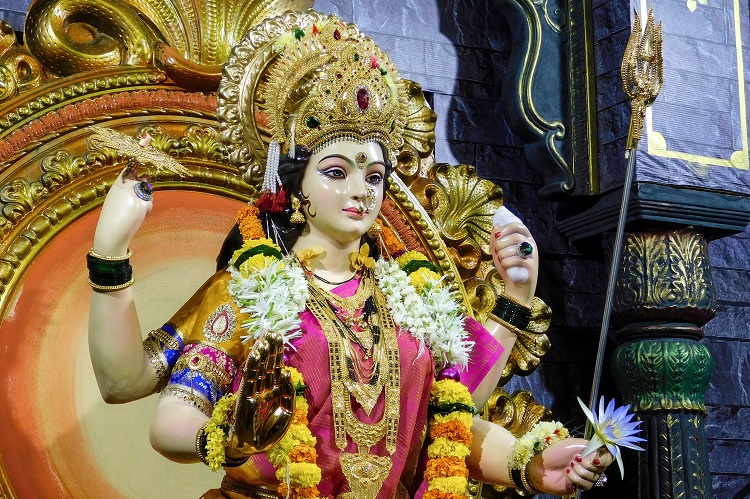
Durga Puja starts with the Shasthi, or on the sixth day of Navratri on October 11, and continues till the end of Navratri (Dashmi) on 15 October, 2021.
October 7 – October 15, 2021
October 1 – October 5, 2022
Durga Puja is a religious occasion, that brings people together and connects them in the form of Maa Durga Devotees. A variety of customs, such as fasting, feasting, worship, etc., are performed during the festival of the entire ten days. Six days during the festival are of immense importance including Mahalaya, Shashthi, Maha Saptami, Maha Ashtami, Maha Navami, and Vijayadashami. While Idol immersion and Kanya worship are performed during the last four days of Saptami, Ashtami, Navi, and Dashami.
People worship the ten-armed, lion-riding Goddess with full zeal, joy, and devotion. Durga Puja is an important religious festival for Hindus. Durga Puja is celebrated with much fanfare in Bengal. The celebration of Durga Puja is also widely prevalent in Assam, Orissa, Jharkhand, Manipur, and Tripura, India.
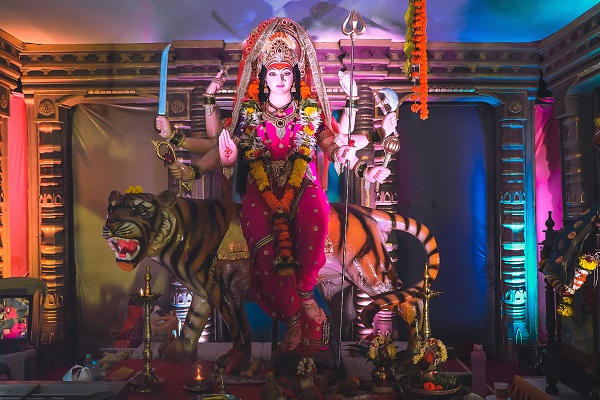
Durga Puja is also observed during the auspicious time of Navratri in most parts of India. Apart from Western India, the festival of Durga Puja is also celebrated in Delhi, Uttar Pradesh, Maharashtra, Gujarat, Punjab, Kashmir, Andhra Pradesh, Karnataka, and Kerala. Durga Puja festival is also celebrated as a big festival in Nepal and Bangladesh, with an 8% Hindu population. It is also organized in various countries, including the United States of America, Canada, United Kingdom, Australia, Germany, France, Netherlands, Singapore, and Kuwait.
Got Questions? Contact Us Now:
Contact Number:
+ 1 – 647-540-2812 (Canada & USA #)
+ 91 – 888-268-1484 (India # – WhatsApp & BOTIM)
Email:
contact@liveonlinepuja.com
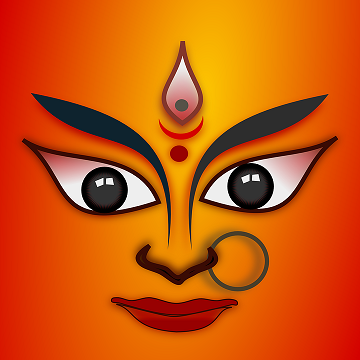
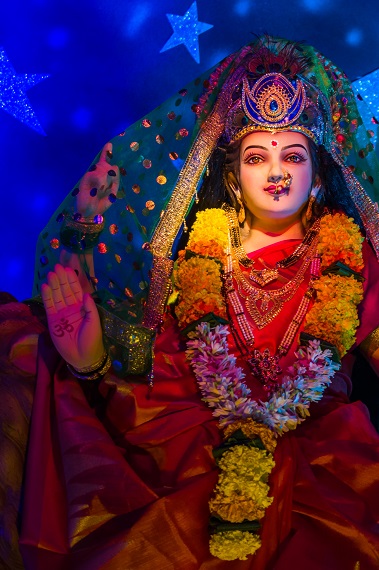
After the birth of Maa Durga, she gained the trident from Lord Shiva; Lord Vishnu gave the Sudarshan chakra, Hanuman Ji gave mace, Shri Ram gave a bow, Agni arrows filled with power, Varuna gave the divine conch, Prajapati gave garland of the crystal beads, Lakshmi Ji gave the lotus flower, Indra dev gave Vajra (thunderbolt), Sheshnag gave snake embellished with gems, Varun Dev gave pash (loop) and arrow, Brahma Ji gave the four Vedas. Himalaya mountain gave lion to Mata for the ride.
Apart from these, Mother Durga received the everlasting divine clothes, chudamani (a type of clip for hairs), bright necklaces, bracelets of hands, two earrings, and rings from the sea. Mata Durga wore all these weapons and other items. This great and magnificent form of Maa Durga was enough to instill fear among the Asuras. Maa Durga possesses the powers of all the gods. There is no other powerful like Maa Durga; she has immense power, there is no end to those powers, so she is called Adishakti.
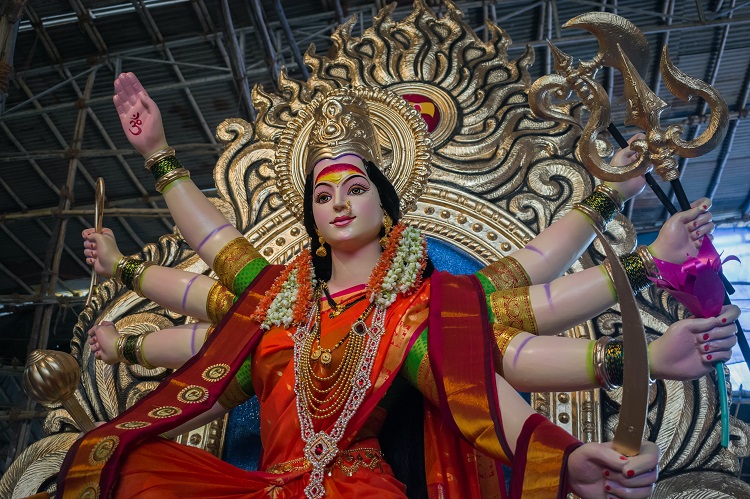
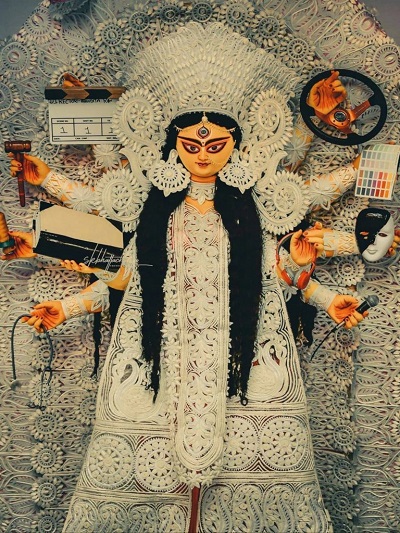
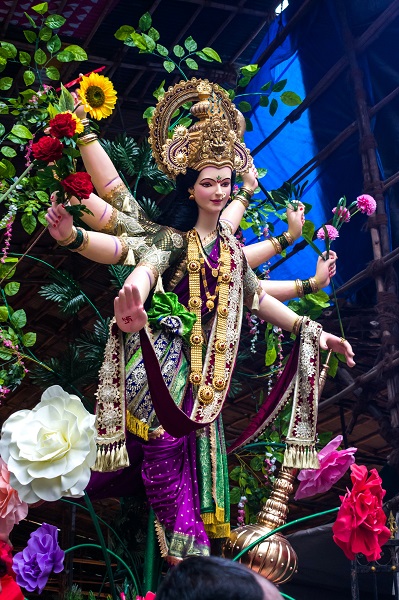
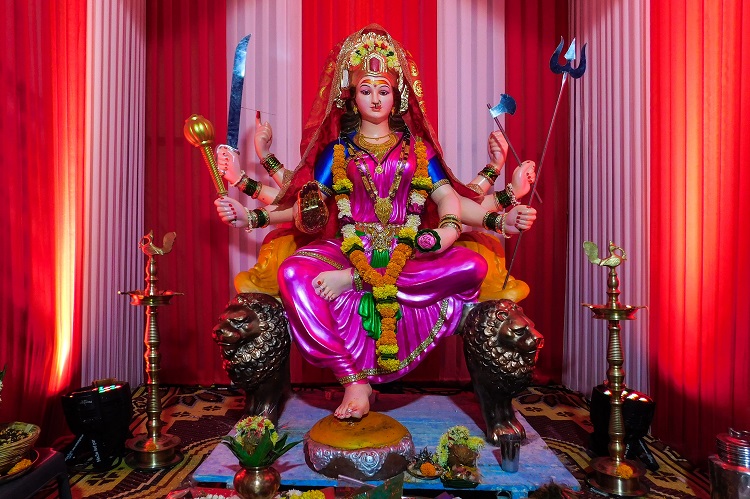
Though Durga Puja is considered an old tradition in the Hindu religion, its exact origins are unclear. The first ancient record of such a celebration of Durga Puja, which was done by royal and wealthy families, is available from the 1500s in West Bengal. It was mainly a family festival, which was observed with great pomp and show in earlier times.
In October 1757, Durga Puja was held with unimaginable grandeur for the first time, by Raja Nabakrishna Deb Bahadur, in his newly built palace at Shova Bazar in present-day Kolkata. Before this, the old city of Kolkata had never experienced Durga Puja on such a scale. The Maharaja invited both common people and dignitaries to attend the Puja. However, Durga Puja is considered to have gained a lot of fame and importance as one of the country’s largest festivals during the country’s independence movement.
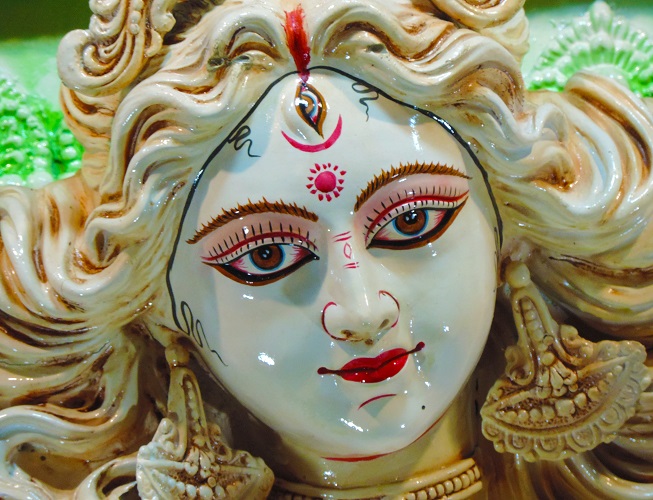
Bengali Hindus consider Durga Puja to be the biggest festival. The grand Pandals and hues of colors make the whole of West Bengal and Kolkata unique during Durga Puja. During this time, the entire atmosphere here is painted in the shades of the devotion of Maa Durga, the Goddess of power.
During nine days of Durga Puja or Navaratri, the amazing glow that is seen all over the country brings relief to the hearts of all. This festival is celebrated in almost every city of northern India, but the most attractive and beautiful tradition of Durga Puja is seen in West Bengal. Here, you get to see grand pandals, the sanctity of worship, shades of colors, goddesses with stunning faces, sindoor khela, dhunuchi dances.
These nine things make the Durga Puja of Bengal unique:
During Durga Puja, Mahishasura Mardini Swaroop (Form) of Maa Durga is worshiped. In Durga Puja Pandals, the idol of Maa Durga can be seen slaying Mahishasura. The Goddess is holding the trident and has an asura named Mahishasura at her feet. Her vehicle, a lion, is also behind the Goddess. To the left of the idol of Maa Durga stand statues of Saraswati and Karthikeya, and to her right side stand statues of Lakshmi and Ganesh along with Ganesha’s two wives in the form of two banana trunks. An image/ idol of Lord Shiva above Durga is also there. This entire presentation is called Chala.
The idols of Goddess Durga are made from the clay collected from the river Hoogly, which is considered sacred in West Bengal. Further, the clay is mixed along with soils from a prostitute’s house (Brothel). This tradition symbolizes that all are equal and loved in Goddess’s eyes. It is believed that the soil outside Brothel (a prostitute’s house) is considered ‘Punya Matti’ as people who visit brothels leave their purity and virtue outside the Brothel.
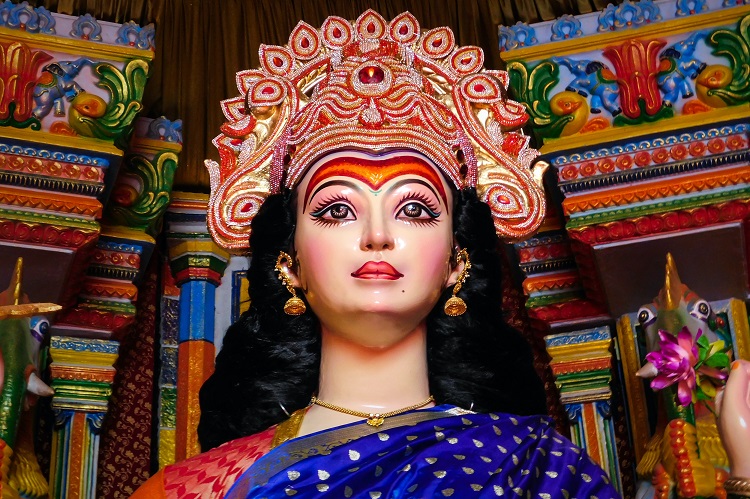
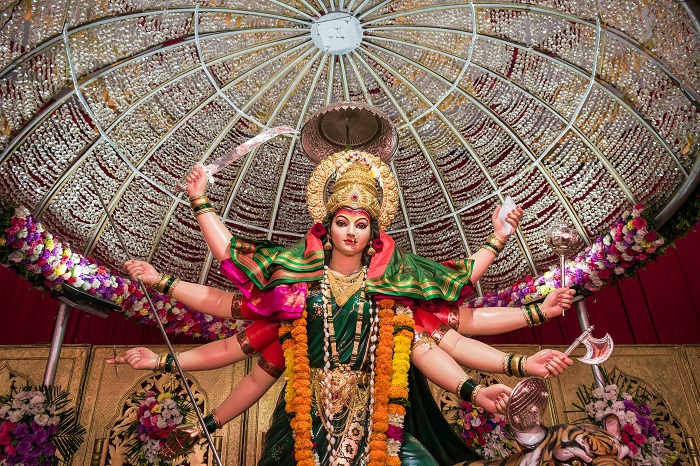
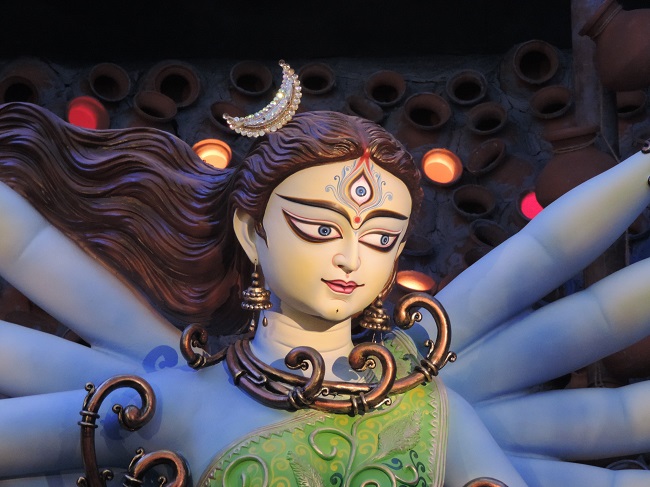
Vijay Dashami is celebrated on the last day of Durga Puja, i.e., Dashami. On this day, only crowds are seen in the streets of Bengal. On this day, the idol of Maa Durga is immersed, marking the return of Maa Durga back to her family. A ritual of family reunion takes place following the immersion. Every Bengali household hosts gatherings and exchanges sweets and gifts with their loved ones. However, above all, Durga Puja is essentially the worship of womanhood and the celebration of the supreme source of power – Maa Durga.
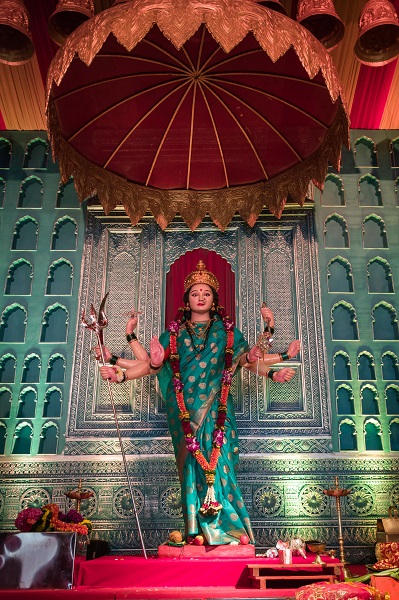
Maa Durga is a gracious and fierce Goddess who can free people from all negative forces, and hence, Durga Puja is a boon for people suffering from all sorts of negative impacts in their lives. Durga Puja can get for the devotees the grace of the Goddess, protect them from distress, sorrow and misery, and endow them with happiness and peace. Women can be blessed with marital harmony, the longevity of the spouse, and long and contented life.
In this modern world, people may end up committing many misdeeds and sins, knowingly and unknowingly. This may incur for them the displeasure or even the wrath of the Gods. Durga Puja can please the Maa Durga, and she gives her devotees divine protection and forgives the devotees. It is believed that Maa Durga will help mitigate the harm that may occur to them or their families.
Checkout our YouTube Channel for daily dose of devotional content.






